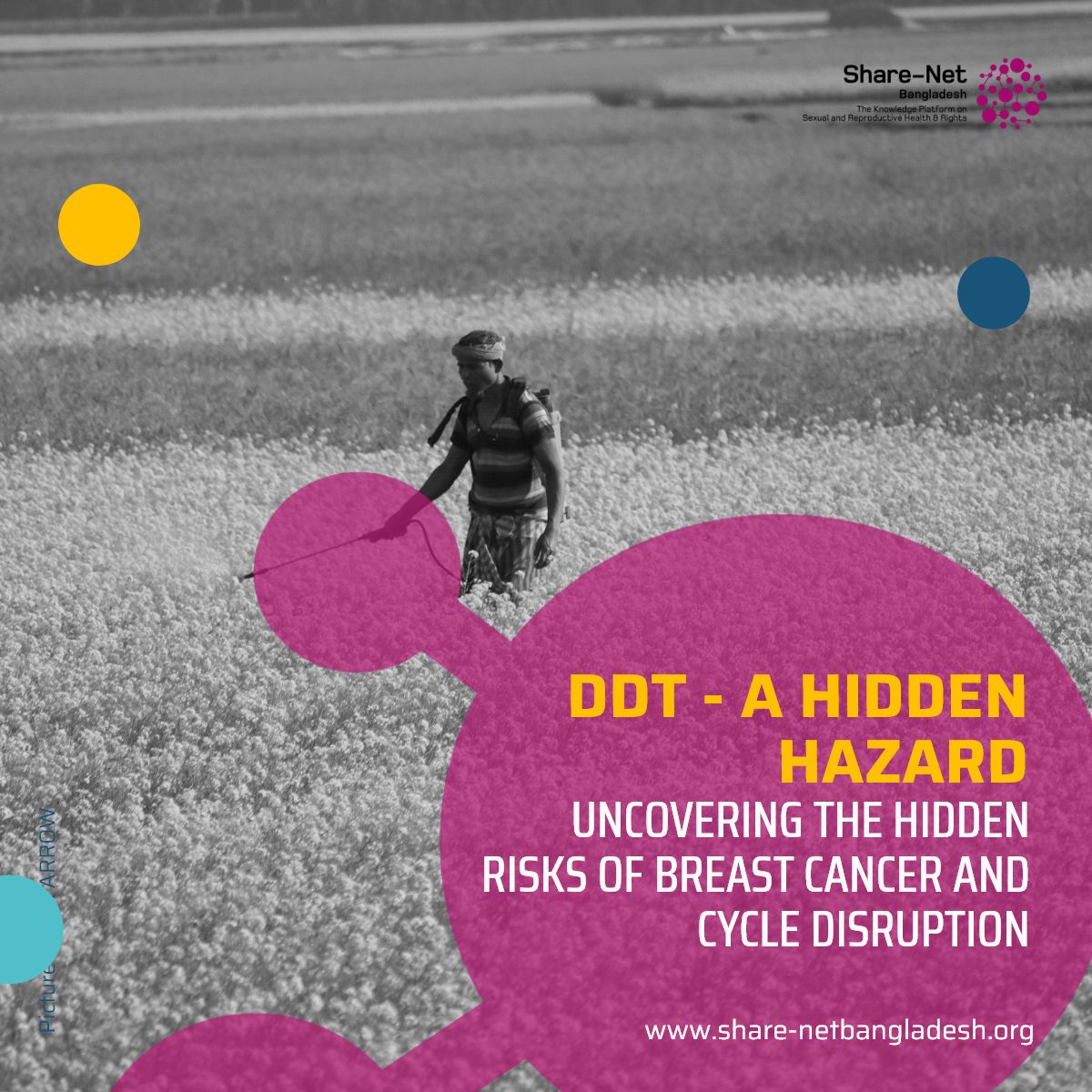DDT – A Hidden Hazard: Uncovering the Hidden Risks of Breast Cancer and Cycle Disruption
“DDT in fish and meat affects women every day,” says Salma Rahman, 38, a Bangladeshi mother and homemaker. “But we had no idea it could cause cancer.” Like many women, Salma may not know that the lingering presence of DDT in her diet has been linked to serious health issues, including breast cancer and menstrual disruptions.
Despite being banned in 2007 under the Stockholm Convention, DDT—a persistent, toxic pesticide—is still used in Bangladesh, particularly in agriculture, fisheries, and mosquito control. Research highlights that the contamination level in Bangladeshi food markets is substantial, with DDT levels reaching up to 875 parts per billion (ppb) in certain fish, such as shrimp and ribbon fish, and even higher in beef. Due to DDT’s ability to accumulate in fatty tissues, prolonged exposure can have severe health impacts on women, especially affecting their reproductive health and potentially transferring harmful compounds to future generations.
Studies reveal that exposure to DDT disrupts the endocrine system by binding to estrogen and progesterone receptors in women’s bodies, leading to issues like breast cancer and menstrual irregularities. For instance, reproductive-aged women who consume higher-fat foods like fish and beef—common sources of DDT—are at increased risk. It’s estimated that over 13,000 Bangladeshi women are diagnosed with breast cancer annually, with around 7,000 deaths as a result. Research correlates elevated DDT levels in women’s serum with increased breast cancer rates, especially for those exposed during their mammogenesis, a critical growth period from fetal development to puberty.
Health experts also link DDT exposure to menstrual disorders such as polymenorrhea (frequent periods) and oligomenorrhea (irregularly spaced periods), which can hinder fertility and reproductive health. This occurs because DDT and its breakdown products, such as p,p’-DDE, disrupt hormone signaling in the body, affecting the hypothalamus-pituitary-ovarian axis. “Many women in my community face irregular cycles, but they don’t realise it could be due to DDT exposure,” adds Rina Ahmed, a 41-year-old farmer.
Compounding these concerns is the detection of DDT in breast milk, particularly in regions where malaria control measures necessitate insecticide use. This poses additional risks to infants, as exposure through breastfeeding can potentially increase cancer risks in daughters later in life. DDT’s role as an endocrine disruptor means it acts like estrogen in the body, influencing breast tissue growth abnormally, which can be a factor in breast cancer development. In fact, daughters breastfed by mothers with high DDT levels face up to a fivefold higher risk of developing breast cancer as adults.
In Bangladesh, the persistent use of DDT highlights the need for better awareness among farmers and fishers about its health hazards. Regulatory action remains vital, as does promoting alternatives like biodegradable bio-pesticides. For women and their families, building awareness and reducing exposure to DDT-contaminated foods is essential to lowering these risks.
In short, while DDT continues to impact the environment and human health, its specific threat to women’s sexual and reproductive health in Bangladesh demands urgent attention. Addressing this issue through community education and regulatory reforms could safeguard the well-being of future generations.
Download the full report: https://www.frontiersin.org/journals/public-health/articles/10.3389/fpubh.2024.1309499/pdf
Source: Frontiers
Picture Credit: Shad Arefin/Unsplash


